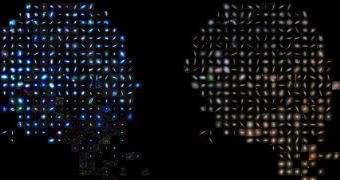Officials with the European Space Agency (ESA) announce that data collected by the Herschel Space Observatory have recently been stitched together to create the largest census of dust distribution in local galaxies ever developed. This impressive dataset will help astronomers in their quests to figure out how galaxies evolved, how new stars are formed, and how galaxies reach the end of their lives.
When it launched, on May 14, 2009, Herschel was the most complex and advanced space telescope ever built. The spacecraft operated between 2009 and 2013 and was the largest infrared observatory ever sent to orbit. It sported a single, 3.5-meter (11.5-foot) main mirror, which fed light to instruments capable of surveying far-infrared and submillimeter frequencies (55 to 672 microns).
These capabilities made the telescope the perfect candidate for surveying dust distribution in the local Universe. Cosmic dust is usually hotter than the surrounding interstellar space, due to the fact that it absorbs radiations and light from nearby. When the material is heated up, it re-emits light at the exact same infrared wavelengths Herschel was most sensitive to.
Until now, only minimal amounts of information on the properties of dust were available for galaxies other than the Milky Way. One of the most important questions related to these traits was whether or not dust types vary with the nature of their host galaxies. In order to figure out the answer to this question, Herschel studied hundreds of galaxies located 50 to 80 million light-years away from Earth.
During its investigations, it observed star formation activities and chemical composition patterns in 323 nearby galaxies. In the image above, the most dust-rich of these objects are located in the top left corner, while galaxies with the lowest amount of dust can be seen towards the bottom right.
Keeping in tone with theoretical predictions, elliptical galaxies exhibit the lowest amount of dust. This makes sense because these extremely large galaxies have already exhausted all of their star-forming material reserves. On the other hand, spiral and irregular galaxies have more gas and dust available for stellar formation, so they appear towards the top-left portion of this collage.
“For comparison, the galaxies are also shown in visible light images obtained by the Sloan Digital Sky Survey. Here, blue corresponds to young stars – hot, massive stars that burn through their fuel very quickly and are therefore short-lived,” ESA experts say in a press release.
“The Herschel observations allow astronomers to determine how much light is emitted by the dust as a function of wavelength, providing a means to study the physical properties of the dust,” they add.

 14 DAY TRIAL //
14 DAY TRIAL //